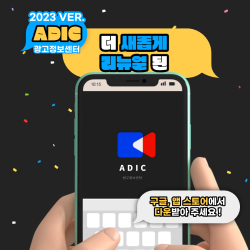자료요약
이 글은 텔레비전 방송(이하 ‘방송’)의 게임화(gamification) 과정을 추적해, 방송 속에서 게임이 작동하는 메커니즘을 규명하고자 했다. 이를 위해 이 글이 주된 분석틀로 삼은 것은 아즈마 히로키(東浩紀)의 ‘게임적 리얼리즘(ゲ?ム的リアリズム, gamic realism)’이다. 하지만 게임적 리얼리즘의 한계, 그리고 단일 연구자의 논의를 주된 분석틀로 삼는 것의 한계를 고려해, 게임화 현상을 보다 잘 설명해줄 수 있는 기존 개념들을 활용하거나 새로운 개념을 고안하도록 했다. 실질적인 분석을 위해 방송 텍스트 5개(KBS 2TV 〈생방송 게임천국〉, SBS 〈런닝맨〉, Mnet 〈프로듀스 101〉, MBC 〈마이 리틀 텔레비전〉 ‘사랑, 그것은 데스티니...’, 유튜브(YouTube)의 〈양띵 유튜브〉)를 대상으로 삼았다. 게임화로 인해 방송에서의 큰 이야기는 사라지고 그 자리를 데이터베이스가 채우게 된다. 텍스트의 심층에 데이터베이스가 자리한다는 것은, 이제 더 이상 방송이 완결된 이야기를 시청자에게 제공하지 않으며, 시청자의 참여를 통해서만 완성되는 불완전한 텍스트가 됨을 의미한다. 그러한 데이터베이스의 요소는 설정(기획의도 · 콘셉트, 시 · 공간 배경, 이벤트), 규칙 · 목표 · 결과, 그리고 캐릭터로 구성된다. 데이터베이스화의 효과 혹은 결과로 게임화한 방송의 이야기는 복수화(複數化)되고 모듈화(modularization)된다. 데이터베이스는 시청자에 의해 재/조합 가능한 작은 이야기가 되며, 그것들이 모여 만들어진 이야기에 대해서는 리셋과 리플레이가 가능해진다. 결론적으로 이 글에서는 게임화한 방송 텍스트를 열린/작가적 텍스트, 생산자적 텍스트를 잇는 ‘플레이어적’ 텍스트로 규정하고자 했다. 플레이어적 텍스트는 생산자적 텍스트의 대중성과 텍스트성뿐 아니라, 플레이어성과 현재성을 가진다.
The purpose of this study is to track down how a television broadcast program (The rest is mentioned as ‘program’) transforms into a digital game, reveal the activating mechanism of games within the programs, analyze how the viewers embrace it and what it means in our everyday life. In order to achieve such research goal, four Korean television broadcast programs and one internet game broadcasting channel were analyzed based on ‘the gamic realism’ of Azuma Hiroki. Due to the gamification, the grand narrative allowed its place to the database. This means that the program is completed only through the participation of the viewers. The database consists of settings (such as project intention, concepts, temporal and special backgrounds, events), rules, goals, results, and characters. The content of the program become pluralized and modularized because of the results and effects from these databases. Therefore, gamified program is defined as a ‘playerly’ text, following the previous ‘open and writerly text’ and ‘producerly text’.
The purpose of this study is to track down how a television broadcast program (The rest is mentioned as ‘program’) transforms into a digital game, reveal the activating mechanism of games within the programs, analyze how the viewers embrace it and what it means in our everyday life. In order to achieve such research goal, four Korean television broadcast programs and one internet game broadcasting channel were analyzed based on ‘the gamic realism’ of Azuma Hiroki. Due to the gamification, the grand narrative allowed its place to the database. This means that the program is completed only through the participation of the viewers. The database consists of settings (such as project intention, concepts, temporal and special backgrounds, events), rules, goals, results, and characters. The content of the program become pluralized and modularized because of the results and effects from these databases. Therefore, gamified program is defined as a ‘playerly’ text, following the previous ‘open and writerly text’ and ‘producerly text’.
목차
1. 연구의 배경과 목적
2. 기존 논의 검토와 문제의식
3. 분석방법과 대상
4. 게임화한 방송 텍스트의 형식체계
5. 게임화의 효과 혹은 결과: 조립형 이야기
6. 결론
2. 기존 논의 검토와 문제의식
3. 분석방법과 대상
4. 게임화한 방송 텍스트의 형식체계
5. 게임화의 효과 혹은 결과: 조립형 이야기
6. 결론
#텔레비전 방송 #인터넷 방송 #게임화 #게임적 리얼리즘 #플레이어적 텍스트 #television broadcasting #internet broadcasting #gamification #gamic realism #playerly text











